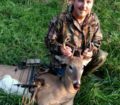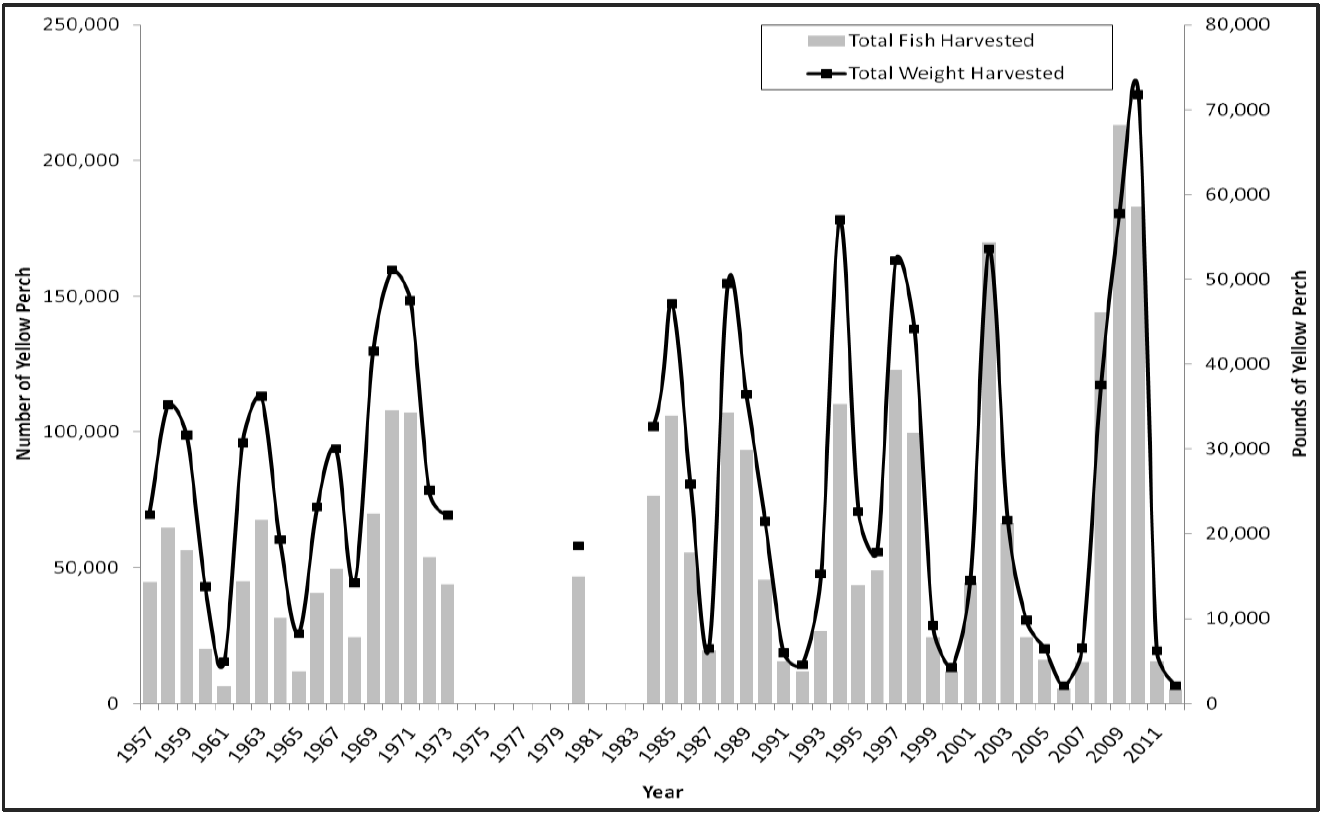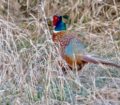By Darial Weisman
Just this morning I was reminded one of the reasons that my husband and I enjoy feeding the birds. It was a normal cold winter day, when suddenly the wind kicked up, the snow started whirling around and we were in a two-hour mini blizzard!
During this time, there they were. Little purple finches were flitting in and out bouncing around on the wind-blown feeder to grab a seed (or 10) before taking off. Black-capped chickadees, too, came to the feeder. At times, instead of sitting on the edge of the open feeder, they would plop themselves right in the middle of the seed. Meanwhile, juncos spent their time hopping around on the ground picking up spilt seeds. Oh, and there was the squirrel making his trip to the feeder and then back to its tree.
Back and forth throughout the squall, they came and went. It was a definite reminder that our feeding station is important to our backyard wildlife. It’s also a reminder that we have to keep it up. If we start feeding, we need to keep consistently doing so. After all, we are their human caretakers.
At the same time, water continues to be important. You might think that the snow is good enough, but these songbirds require water for both drinking and, yes, even in the winter a bath for a little preening. That’s why we keep a heated bath waterer filled for our little visitors.
There are so many options for feed, but we find that the woodpeckers really like to peck away at raw, shelled peanuts. Suet also goes a long ways in helping give them an energy boost.
In both our open feeder and our covered feeder we put an Audubon Brand wild bird feed blend. We always try to fill our feeding stations at night, since most birds start feeding very early. As a matter of fact, we have a pair of secretive cardinals that come just at daybreak. So my job is to make sure that my husband gets that feed out so the birds have an ample supply in the morning.
Some people worry about seed spilling out on the ground, but that spilt seed is important for our ground feeding birds. Plus, there are more shy or timid varieties that like seeds that are scattered near the trees and shrubs.
The reason we choose the Audubon blend is that it offers the most energy-packed seeds for a variety of birds. The blend includes whole sunflower seeds in the shell and also just the open seeds, safflower and peanut halves. It is definitely a good smorgasbord! It is important that the seed is kept in a cool, dry place. A couple of summers ago we had some in a Tupperware container, and the heat and humidity got inside and made quite a mess.
After each snow/rain event, it’s a good idea to check the feeders. Earlier this winter, we had an inch of rain and then everything froze. The covered feeder was ok, but the open platform was iced seed. When my husband went out to check it, he actually had to bang it on the base pole to get the seed to come out (in one iced chunk). After blizzard conditions, feeders can become caked with hardened snow, and the birds simply can’t get at the seed. Plus, the snow will often then melt a little bit in the sun and then ice up. Moisture in the seed can cause spoiling issues.
Really, it’s all about consistency. If you start feeding and watering the birds, keep feeding and watering the birds. They begin to count on you. Plus, what delightful antics you will get to witness out your favorite window!
(photos by Darial Weisman)

squirrel
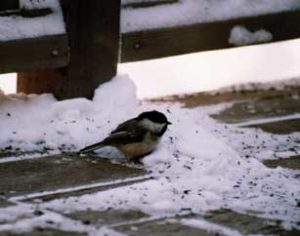
black-capped chickadee
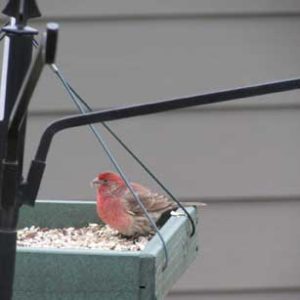
purple finch
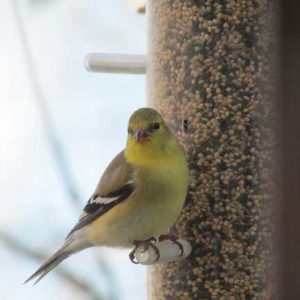
gold finch


